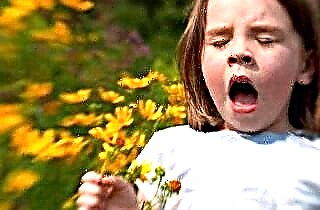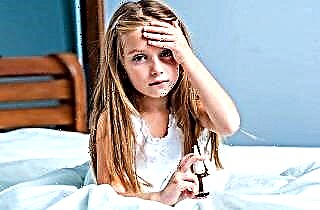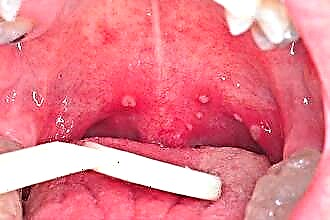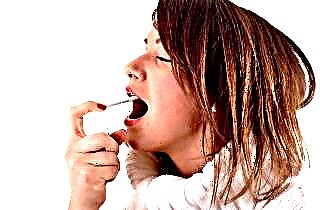Acute rhinosinusitis is very common in children. This is an inflammatory process that is localized in the paranasal sinuses. In most cases, rhinosinusitis develops against a background of viral diseases and is aggravated by a bacterial infection. Often, the appearance of such an ailment is preceded by an incompletely cured rhinitis (runny nose). Before therapy, it is extremely important to identify the cause of the disease and to pinpoint the symptoms.
Symptoms
 In childhood, rhinosinusitis can occur in two forms - catarrhal and purulent. Catarrhal rhinosinusitis is manifested by well-marked swelling of the nasal mucosa. In this case, the formation and discharge of mucus does not occur. As for the purulent form of the disease, in this case, a large amount of pus accumulates within the paranasal sinuses. Intoxication of the body occurs, deterioration of the general condition, the child complains of severe headaches.
In childhood, rhinosinusitis can occur in two forms - catarrhal and purulent. Catarrhal rhinosinusitis is manifested by well-marked swelling of the nasal mucosa. In this case, the formation and discharge of mucus does not occur. As for the purulent form of the disease, in this case, a large amount of pus accumulates within the paranasal sinuses. Intoxication of the body occurs, deterioration of the general condition, the child complains of severe headaches.
The first symptoms of rhinosinusitis usually appear 7 days after the onset of a cold. Therefore, the signs of such a disease are closely related to the symptoms of the original disease and are very similar to it. Nasal congestion makes it difficult to breathe normally, and this causes significant discomfort. In addition, the voice becomes nasal, which is associated with impaired ventilation of the paranasal sinuses.
Mucus starts to come out from the nostrils (secret). It can be transparent, yellowish or greenish. Periodically, severe headaches occur, which even effective analgesics cannot cope with (this is one of the most striking symptoms of rhinosinusitis). When palpating the face, soreness is felt in the area above the eyebrows and around the nose, there is a feeling of heaviness in the cheeks.
In some cases, the baby's body temperature can rise to subfebrile values (no higher than 38-39 degrees). The mucus runs down the throat. For this reason, an unpleasant aftertaste appears in the mouth, the sharpness of smell is significantly reduced.
Types of rhinosinusitis
Rhinosinusitis in children, the treatment of which should begin only after an accurate diagnosis, is presented in several varieties. Each type of ailment requires specific therapy. The classification of rhinosinusitis is based on the root cause of the disease:
- Allergic type of rhinosinusitis is a combination of allergic and traditional rhinitis. It is usually diagnosed in young children between the ages of 2 and 4. The characteristic symptoms of the disease are drowsiness, headaches, nasal congestion, and an increase in body temperature. In addition, there is a profuse discharge from the nose.
 In infectious rhinosinusitis, the inflammatory process of the nasal cavity is caused by bacteria and viruses of various types. It occurs against the background of a weakened immune system. Pathogenic microflora penetrates into the nasal cavity and begins to multiply actively, creating extensive infectious foci. As for the key symptoms, they will entirely depend on the type of pathogen that has entered the body.
In infectious rhinosinusitis, the inflammatory process of the nasal cavity is caused by bacteria and viruses of various types. It occurs against the background of a weakened immune system. Pathogenic microflora penetrates into the nasal cavity and begins to multiply actively, creating extensive infectious foci. As for the key symptoms, they will entirely depend on the type of pathogen that has entered the body.- Vasomotor rhinosinusitis is a consequence of a low tone of blood vessels in the nose (usually diagnosed in children from 5 to 7 years old). Distinctive features of such a disease will be periodic headaches, sleep disturbances, fatigue and general weakness. This type of disease is characterized by a cyclical course. The nature of its manifestations can vary depending on hypothermia or overstrain of the nervous system.
- Rhinosinusitis of the polyposis type is characterized by constant nasal congestion, as well as a decrease in the acuity of smell. Thickening of the nasal mucosa leads to the appearance of neoplasms. Polyps can be difficult to get rid of with medication, so surgery is often necessary. There is a high probability of a relapse of this ailment (re-emergence of polyps). It is impossible to eliminate neoplasms at home; professional medical assistance is required.
What are the risk factors? It is possible that rhinosinusitis occurs in children with excessively narrow nasal passages, as well as against the background of scarlet fever, chickenpox and measles. Foreign objects trapped in the paranasal sinuses can also provoke rhinosinusitis. Often it is preceded by chronic diseases, which significantly reduce the body's immune forces.
In some cases, the appearance of the disease is associated with anatomical (congenital or acquired) features of the structure of the nose. This can be, for example, a deviated nasal septum. Defects interfere with normal ventilation of the paranasal sinuses and can cause impaired outflow of purulent mucus.
Directions and methods of treatment
After the examination, the doctor selects the optimal comprehensive rehabilitation course, which allows you to achieve a lasting result. Treatment focuses on:
- elimination of the root cause of the disease;
 resumption of the evacuation of mucus from the body;
resumption of the evacuation of mucus from the body;- restoration of full-fledged nasal breathing;
- strengthening of immunity.
If we talk about drug therapy, then in this case, pharmacological drugs of several groups are used. First of all, these are means for narrowing the nasal vessels (sprays and drops). They eliminate the swelling of the mucous membrane and accelerate the outflow of secretions. But you need to use such medicines carefully. Their prolonged use makes the mucous membrane too dry and the vessels fragile.
As an adjunct, antibiotics and steroids are prescribed (only if they are really needed). Antibacterial agents are a mandatory measure for moderate to severe rhinosinusitis. Mucolytics are used to eliminate frequent coughing attacks. In addition, non-steroidal anti-inflammatory drugs are in demand.
In some cases, you cannot do without a puncture - a puncture of the wall of the paranasal sinus. The doctor pierces it in the place where the mucous membrane is thinnest, then pumps out the pus (if there is one, of course). Then the cavity is washed with a special antiseptic preparation. As practice shows, the hole after a puncture is overgrown very quickly (within a few days). The operation usually does not cause any complications or consequences.
Physiotherapy procedures are an additional method of local exposure. Physiotherapy is prescribed at the final stage of the disease. It speeds up recovery and quickly relieves puffiness.
Occasionally, patients are shown complex surgical operations - radical, but in some cases the only way to eliminate intracranial and ocular complications.
We are treated at home
 They cope well with rhinosinusitis in children by inhalation based on the following medicinal plants:
They cope well with rhinosinusitis in children by inhalation based on the following medicinal plants:
- sage;
- chamomile;
- spike lavender;
- eucalyptus leaves;
- St. John's wort.
To prepare the base for inhalation, you will need to take 2.5 tablespoons of each component and add 1 tablespoon of the string and millennial. Brew the collection in a saucepan (2 liters) and carry out the procedure up to 6 times a day.
You can also use propolis inhalation. Take a couple of tablespoons of the pharmacy propolis tincture and add to one liter of hot water. If desired, inhalations are replaced with compresses. Drip a mixture of olive oil and propolis into your child's nose. It relieves puffiness well and helps to reduce the intensity of inflammatory processes.
Also, keep in mind the following helpful tips:
- The sooner you see your doctor, the more effective the treatment will be.
- Protect your little one from contact with allergens (for allergic rhinosinusitis).
- Encourage children to be active.
- Visit pediatric dentistry regularly and monitor the condition of your teeth.
- Try rinsing your nasal cavity with a mild saline solution, mineral water, decoctions of currant leaves and calendula flowers.
- Drip aloe juice into the nose of a small patient. An alternative can be diluted lemon extract or diluted juice of onion and garlic.
- Do not forget to monitor the condition of the nasal mucosa. Use glycerin ointments to prevent dryness.
Prophylaxis
Rhinosinusitis is a disease that is very often diagnosed in children of different ages. It usually occurs against a background of reduced immunity. Given this, maximum attention should be paid to measures that will restore and strengthen the body's defenses. Doctors advise to start hardening from childhood. It is very important to provide adequate nutrition and include foods rich in vitamins and minerals in the diet.
 Such children's multivitamin complexes as "Vitrum" and "Alphabet" have proven themselves very well. If the baby is not allergic to the components of medicines, use immunomodulatory agents - pharmaceutical and natural (ginseng, echinacea, lemongrass, and so on).
Such children's multivitamin complexes as "Vitrum" and "Alphabet" have proven themselves very well. If the baby is not allergic to the components of medicines, use immunomodulatory agents - pharmaceutical and natural (ginseng, echinacea, lemongrass, and so on).
Always try to treat seasonal infectious diseases - colds, flu and other illnesses correctly and until complete recovery. Diseases of the teeth are one of the possible causes of rhinosinusitis. Give priority to the treatment of the teeth of the upper jaw. A full life, daily physical activity and the right diet will help your child to always be in good shape and less likely to get sick.
Rhinosinusitis is dangerous with severe complications. Persistent headaches and a long-lasting runny nose - these symptoms should alert parents. Do not self-medicate. The best option is to see a doctor immediately. Only he will be able to determine the cause of the ailment and select therapy, taking into account the individual and age characteristics of your baby.

 In infectious rhinosinusitis, the inflammatory process of the nasal cavity is caused by bacteria and viruses of various types. It occurs against the background of a weakened immune system. Pathogenic microflora penetrates into the nasal cavity and begins to multiply actively, creating extensive infectious foci. As for the key symptoms, they will entirely depend on the type of pathogen that has entered the body.
In infectious rhinosinusitis, the inflammatory process of the nasal cavity is caused by bacteria and viruses of various types. It occurs against the background of a weakened immune system. Pathogenic microflora penetrates into the nasal cavity and begins to multiply actively, creating extensive infectious foci. As for the key symptoms, they will entirely depend on the type of pathogen that has entered the body. resumption of the evacuation of mucus from the body;
resumption of the evacuation of mucus from the body;

